The East Bank is where the modern city of Luxor can be found (as opposed to the quieter and more agricultural West Bank). It has a population of around 500,000 and is heavily tourist based, so there is plenty to do.
Temple of Luxor
Luxor Temple is a large ancient Egyptian temple complex located on the east bank of the Nile River which was founded in 1400 BCE. For centuries Thebes was the capital of the known world. In Luxor there are six great temples, the four on the left bank are known to travellers and readers of travels in Egypt as Goornah, Deir el Behari, the Ramesseum and Medinet Habu; and the two temples on the right bank are known as the Karnak and Luxor.
To the rear of the temple are chapels built by Tuthmosis III, and Alexander. During the Roman era, the temple and its surroundings were a legionary fortress and the home of the Roman government in the area. Luxor is also distinctive for having a mosque built over part of it just inside the first pylon – the mosque, Abu Haggag, is still there today.
Admission: LE 50
Karnak Temple
The Karnak Temple Complex – usually called Karnak – comprises a vast mix of decayed temples, chapels, pylons, a sacred lake and other buildings. Building at the complex began in the reign of Sesostris I in the Middle Kingdom and continued into the Ptolemaic period, although most of the extant buildings date from the New Kingdom. The area around Karnak was the ancient Egyptian Ipet-isut (“The Most Selected of Places”) and the main place of worship of the eighteenth dynasty Theban triad with the god Amun as its head. It is part of the monumental city of Thebes. The Karnak complex takes its name from the nearby, and partly surrounded, modern village of el-Karnak, some 2.5 km north of Luxor.
The complex is a vast open-air museum and the largest ancient religious site in the world. It is believed to be the second most visited historical site in Egypt, second only to the Giza Pyramids near Cairo. It consists of four main parts of which only the largest is currently open to the general public. The term Karnak often is understood as being the Precinct of Amun-Re built during the 18th Dynasty (1554-1305 BC) only, because this is the only part most visitors normally see). The three other parts, the Precinct of Mut, the Precinct of Montu, and the dismantled Temple of Amenhotep IV, are closed to the public. There also are a few smaller temples and sanctuaries located outside the enclosing walls of the four main parts, as well as several avenues of goddesses and ram-headed sphinxes connecting the Precinct of Mut and the Precinct of Amun-Re with Luxor Temple.
Over its long history approximately thirty pharaohs contributed to the buildings, enabling it to reach a size, complexity, and diversity not seen elsewhere. Few of the individual features of Karnak are unique, but the size and number of features are overwhelming. The deities represented range from some of the earliest worshiped to those worshiped much later in the history of the ancient Egyptian culture.
The sacred lake and the fallen obelisk are also elements of the site that many tourists visit.
Admission: LE65
Abu El-Haggag Mosque
Built in the 13th century amid the ruins of Luxor Temple, the Abu al-Haggag Mosque has been left intact because of its religious and historical significance. Over the centuries, silt and sand filled the site but it is now cleared and it’s fascinating the see the mosque virtually as a part of the pharaonic temple.
Avenue of Sphinxes
The Avenue of Sphinxes dates back to the reign of Amenhotep III in the 18th Dynasty. He built an avenue of sphinxes with ram heads, and it is also known that before that, Queen Hatshepsut built seven chapels along this route. The most important phase of the avenue is dated to the 30th Dynasty, during the reign of Nectanebo I. At that time the avenue was made up of 1350 sphinxes lining both sides of the road connecting the temples, which was over 70 meters wide. During the Roman Period, the avenue was subjected to destruction. Many people built roads and houses over the top, and reused the sphinxes in their construction.
The avenue of sphinxes in ancient times joined Luxor and Karnak temples and at the moment it is being restored ready to be reopened shortly. I have read reports that say you won’t be allowed to walk on it which is something of a shame…
Obelisk of Thutmosis I
This obelisk at Karnak was erected by Thutmose I circa 1500 B.C. Some four centuries later Ramesses IV added columns of inscriptions to either side of the original central inscriptions. In turn, Ramesses VI modified the names so that the cartouches could be read as both Ramesses IV and VI. Originally there were a pair of obelisks but only one now remains standing high in the Karnak skyline.
Animal Care in Egypt (ACE)
You cannot step outside your accommodation in Luxor without hearing the shouts of the horse and carriage drivers (called caleches) heckling for a ride or seeing overburdened donkeys carrying carts of almost anything you can imagine.
ACE is an organization that assists in taking care of Luxor’s working animals (mostly horses and donkeys), needed now more than ever in these tough economic times. They see around 100 animals a day! The centre also runs an education program receiving 80 local children a day, aiming to impart a love and care for animals. This is a great place to visit, and foreign children can spend the day at the centre to help care for the animals.
Volunteers and donations are very welcome. Check their website for what is needed at http://www.ace-egypt.org.uk/Home/
Find them at the start of Sharia al-Habil, near the traffic police.
Visit the souqs (markets)
The souq on market street just up from MacDonald’s is a popular place for the tourists to browse and have fun haggling. There is a wide variety of goods on sale from statues to scarves to papyrus and almost any other souvenir of Egypt you can imagine. It is very touristy however and you should haggle hard.
Walk the Corniche
The Sharia al-Corniche is the main street running along the Nile in Luxor. Shaded walkways line the avenue just above the docks where cruise ships and pleasure boats line up for their passengers. A lovely spot for a stroll and watch life on the river but be prepared to be continually bombarded by felucca captains, souvenir sellers, caleche drivers etc. etc. For some this ruins what could be a very pleasant experience but for others it’s part and parcel of the Luxor experience. Some say be polite and just say firmly “La shukran” (No, thank you in Arabic). If it gets too desperate anywhere however simply do not make eye contact or engage in any sort of conversation, regardless of the tricks used to get you to answer.
Luxor Museum
Located on the Corniche between Luxor Temple and Karnak, the Luxor Museum houses an excellent collection of artefacts and statues found in archaeological sites in and around Luxor.
Inaugurated in 1975, the museum is housed in a small, purpose-built building. The range of artefacts on display is far more restricted than the country’s main collections in the Museum of Antiquities in Cairo; this was, however, deliberate, since the museum prides itself on the quality of the pieces it has, the uncluttered way in which they are displayed, and the clear multilingual labelling used.
Among the most striking items on show are grave goods from the tomb of Tutankhamun (KV62) and a collection of 26 exceptionally well preserved New Kingdom statues that were found buried in a cache in nearby Luxor Temple in 1989. The royal mummies of two pharaohs – Ahmose I and Ramesses I – were also put on display in the Luxor Museum in March 2004, as part of the new extension to the museum, which includes a small visitor centre. A major exhibit is a reconstruction of one of the walls of Akhenaten’s temple at Karnak. Another of the featured items in the collection is a calcite double statue of the crocodile god Sobek and the 18th Dynasty pharaoh Amenhotep III.
Admission: LE80
Mummification Museum
The Mummification Museum (opened in 1997) stands on the Corniche, in front of the Mina Palace Hotel, to the north of Luxor Temple, overlooking the Nile. The museum is intended to provide visitors with an understanding of the ancient art of mummification. The ancient Egyptians applied embalming techniques to many species, not only to humans and mummies of cats, fish and crocodiles are on display in this unique museum, where one can also get an idea of the tools and the process used. The hall of artefacts is divided into two parts, the first part is a corridor in which are displayed ten tablets drawn from the papyri of Ani and Hu-nefer that are displayed in the British Museum in London. Most of these tablets highlight the funeral journey from death to burial. The second part of the museum begins from the end of the corridor and the visitor can see the rest of the items on display. The latest addition to the museum is the so called ‘Embalming Bed’ from the tomb of KV63 with two pillows.
Admission: LE50
Fair Trade Centre Luxor Outlet
This is a nonprofit shop that markets handicrafts from NGO projects throughout Egypt. It has a good selection of well-priced hand-carved wood and pottery from the nearby villages of Hejaza and Garagos, aromatic oils from Quz, beadwork from Sinai and hand-blown glass, Akhmim table linen, beading from the west bank in Luxor, recycled glass and recycled paper from Cairo.
They’ve opened a new shop directly opposite Luxor Temple, close to Macdonalds, and the new Aboudi bookshop. It will carry a larger range of products than the present one in more modern surroundings. The current shop will stay open until the redevelopment scheduled to happen in the area commences.
Some of this text taken from: http://www.lonelyplanet.com/egypt/nile-valley/luxor/shopping/arts-crafts/fair-trade-centre#ixzz1opCuY0PY
Find them at Sharia Maabad al-Karnak East Bank
Habiba
Habiba is a small shop run by an Australian woman who wants to provide the very best of Egyptian hand crafts, all of which are priced at fair trade fixed prices. You can find Bedouin embroidery, jewellery, leather work, scarves, the best Egyptian cotton towels, mirrors, brass lights and much more. Something different to the touristy souq nearby.
Find them at Sharia Sidi Mahmoud, off Sharia as-Souq Between Susanna Hotel and Santa Clause shop and at Karnak Hilton Street beside El Fayed Perfumery
Sound and Light Show at Karnak
A one hour show that many find very kitschy, the extravaganza tells the story of ancient Thebes and many of the pharaohs who ruled there. Images play over the ancient structure and a narrator tells stories associated with the site. However the temples are spectacular when lit at night and photo opportunities abound. Shows in winter are at 7.00, 8.15 and 9.30 pm., with an extra show at 10.45 in summer. Shows are in various languages at various times and days so best check if you are interested in attending. www.soundandlight.com.eg
Go for a bike ride
There is an excellent bike rental place in Luxor where you can also rent scooters and motorbikes. They have 3 kinds of bicycle models and if you like they offer bicycle excursions with your own guide. In Luxor they are the only official licensed rental agency, with an official contract – and they have a breakdown service. They have 3 locations in Luxor, two on the East Bank and one on the West Bank. http://www.rentabikeluxor.com/en/
Take a ride in a sea plane
A daily flying programme operated by Legend of the Nile Travel flies over Luxor monuments using the first and the only seaplane in the Middle East and offering a unique sightseeing adventure trip with a fantastic view and the best safety conditions.
They also run, upon request, charter trips to Dendara, Abydos, Esna, Kom Ombo, Aswan, Abu Simbel and Hurghada. The flying base is at the Nile restaurant in the Karnak area. Reservations are made by phone. http://www.lonttravel.com/aviation/
Tel : 00202 26906596/26906597/22906898
Sail in a felucca
To take a felucca ride hail a boat along the Corniche and bargain for the price. Or simply stand on the Corniche and captains will approach you. This is a wonderfully relaxing thing to do.
Dawar al-Umda
Dawar al-Umda has a popular folkloric show that includes a belly dancer, rababa music (named after the instrument that resembles a single-stringed violin) and occasionally a snake charmer. The show is usually on Thursday night and comes with an Oriental buffet.
Find it at Sharia al-Karnak East Bank Mercure Inn.
As we haven’t visited this show this review is taken from: http://www.lonelyplanet.com/egypt/nile-valley/luxor/entertainment-nightlife/live-performance/dawar-al-umda#ixzz1opLuAbCd
Play a game of golf
Royal Valley has an 18– hole championship course and the course and its elegant clubhouse are situated on the East Bank of Luxor, 13 Km from Luxor’s city centre and 8 km from Luxor’s International airport. Royal Valley offers a wonderful combination of year round sunshine and desert golf where you are only moments away from Luxor’s spectacular ancient civilization. More information at: http://www.golfluxor.com/
Visit St Catherine’s Orphanage, Sunshine Project
The Sunshine Project is “a non-profit making charity in the UK established to provide funding and aid to the needy children of Luxor, Egypt” (The Sunshine Project Website, 2010).
This is largely done through the Sunshine Foundation in Luxor which serves as a “home, care, shelter, education, recreation and health facilities to abandoned, orphaned or needy children of Luxor”. The project houses children from just a few weeks old into adulthood and uses education to help them integrate with society, and give them the confidence to overcome ignorance and discrimination.
On arrival at the home they are exposed to two languages, English and Arabic, at nine they start learning French and at ten German. At sixteen the children have the opportunity to continue their education in Cairo, and in some cases the UK.
The Sunshine Project Luxor is located on Movenpick Road at Owamea Village Luxor. It is on the left hand side heading out of Luxor directly across from the Co-op garage and easily reached by cab or caleche from the centre of town.
You can visit the project any day except Fridays when it is closed. Visiting times are between 9am and 12pm and between 2pm and 5pm.
http://www.sunshine-international.org.uk/
Take an Arabic class
The Arabic school in Luxor is located in the Franciscan School on Karnack Street, near the centre of the city. Although they offer group courses and long stays and programmes, individuals can take classes of 60 minutes duration, with no minimum requirement. They also offer seminars and workshops on Egyptology, religion, local customs and practices, cooking, calligraphy and dance. Find out more here: http://www.languagesinaction.com/learn-arabic/egypt/luxor.php
Take a cooking class
For delightful and delicious cooking classes centered on Egyptian/Nubian cuisine, please contact the 30 year veteran chef in Luxor at nubiangourmet@gmail.com. To be honest I’m not sure if this is still operational but you can try. I understand you can also take classes at the Hilton but you might have to be staying there.
Watch the sunset over the Nile
Many of the 5-star hotels are on the East Bank and even if you’re not staying there why not treat yourself to a sundowner in one of the many terrace bars that will face the Nile and watch the sun go down. A great place for photography, and with so many feluccas sailing the river you’ll be sure to be able to catch one in shot against the sunset.
Luxor Heritage Center
This state of the art center in Karnak Temple Street was inaugurated in January 2007 and contains a Panorama of Culture, Star Riders Exhibition Hall, 3-D Show Hall and public library. It also has shows of the Cultnat panorama, an interactive showcase of Pharonic, Coptic, Islamic, natural and modern Egyptian heritage. This panorama is the first of its kind in the world.
Opening hours are 10:00 am till 20:00 pm (except on Tuesday), with Culturama shows in 5 languages (English, Russian, French, Chinese & Japanese) at pre-fixed hours.
Coptic Cathedral
Prominent in the Luxor skyline, the Coptic Cathedral is located near the northern end of town. Its pointed spires can be seen from as far as the Temple of Luxor. The church is of early 20th construction and is among several churches that serve the relatively large Coptic Christian community of Luxor.
Find it on: Sharia Maabad el Karnak (Temple of Karnak Street)
el-Mekashkesh Mosque
The oldest mosque in Luxor, el-Mekashkesh Mosque contains the tomb of a 10th century local saint. It is said that the he was a Christian monk prior to converting to Islam, and his tomb is now a local pilgrimage site. The mosque is located at the northern end of the remaining section of the Avenue of the Sphinxes just north of the Temple of Luxor. Its tall yellow and green minaret can be seen from the Temple of Luxor.
Visit a local café
Visit a local café to enjoy a shisha and coffee or mint tea, maybe a game of backgammon and have a chat with some locals. Relax and unwind the local way.
Take a spiritual course
A range of spiritual courses are available including angels, reiki, crystals and meditation. Reiki treatments are also available. Courses can be as short as one day. Courses are run by a Hazel Brown, a Reiki Master who has been practising since 2001. Hazel is also a trained crystal healer, who works with angels and does yoga and meditation.
If you are a beginner, and want to learn more of the basics while experiencing these wonderful energies or if you are advanced in experience and simply wish to utilise the energies here for your own personal journey, then these courses can offer exactly what you need.
Find out more at http://spiritofthenile.com/spiritual.html

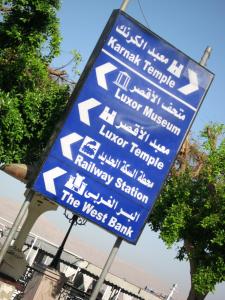

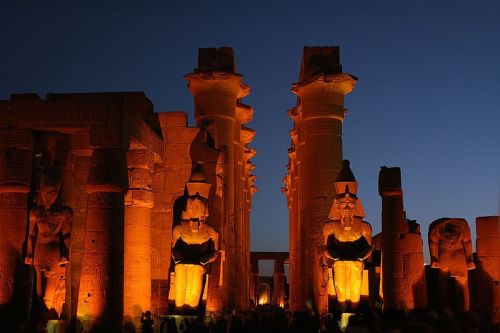
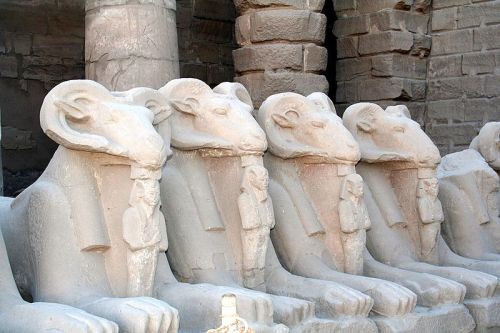
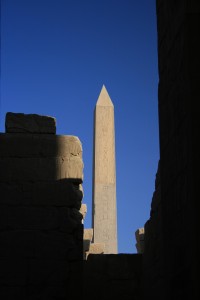
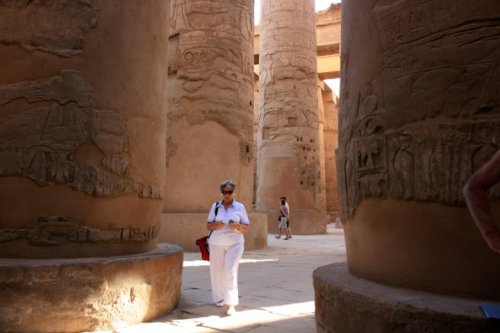
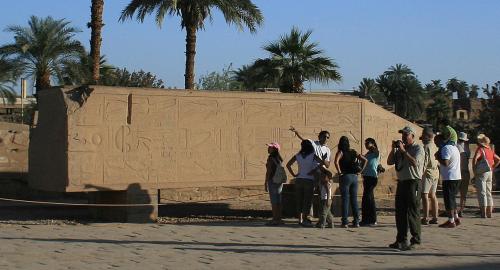
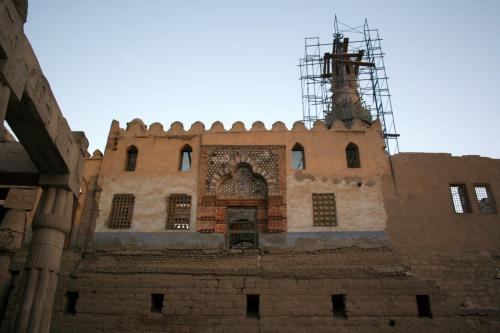
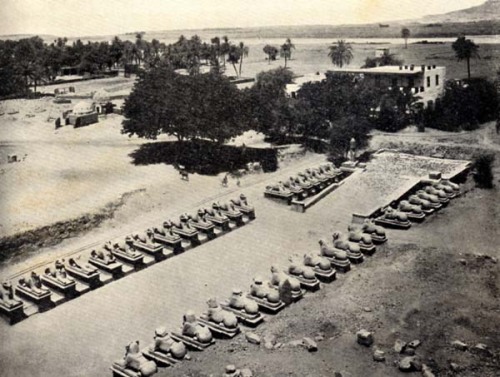
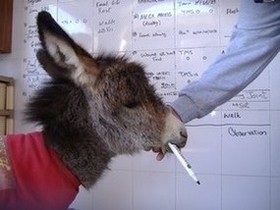
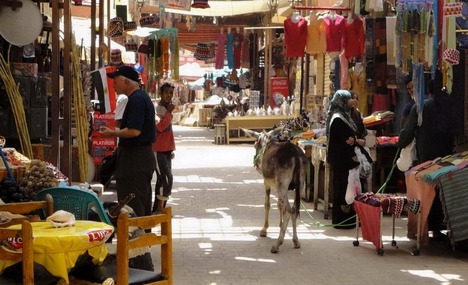
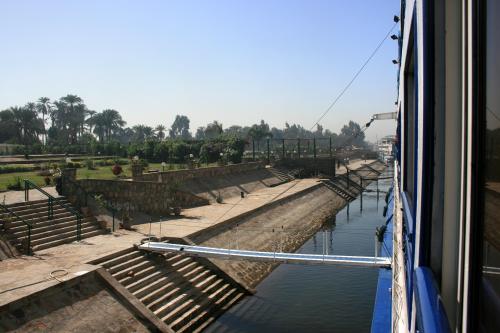

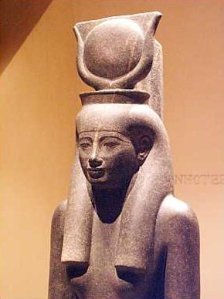


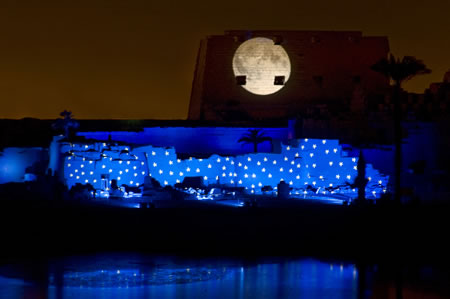


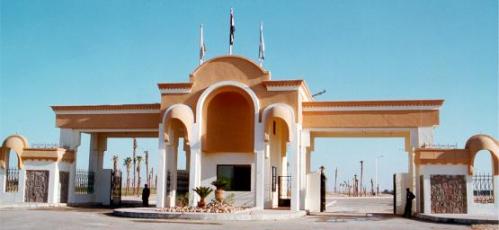




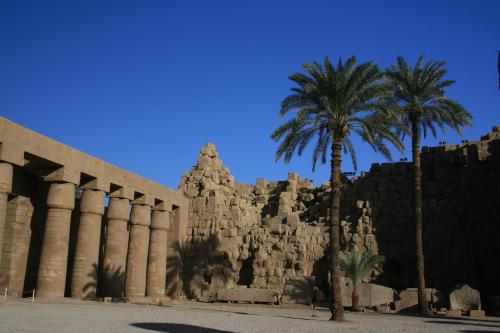
Hello! In regards to visiting Sunshine Home Orphanage. The UK website has been deactivated, but I have started a GoFundMe for the precious souls there. I have visited them in 2016 and 2018. Here is the link to help if possible, thank you 😊 http://www.gofundme.com/f/The-Sunshine-Home
Hello Everyone! This message is in regard to The Sunshine Home in Luxor. Unfortunately the UK website mentioned here is no longer in existence, since their board of directors pulled out in 2015. I have started a personal GoFundMe for them after visiting in 2016 and 2018. Here is the link to continue to help the innocent souls there http://www.gofundme.com/f/The-Sunshine-Home Thank you for reading this!